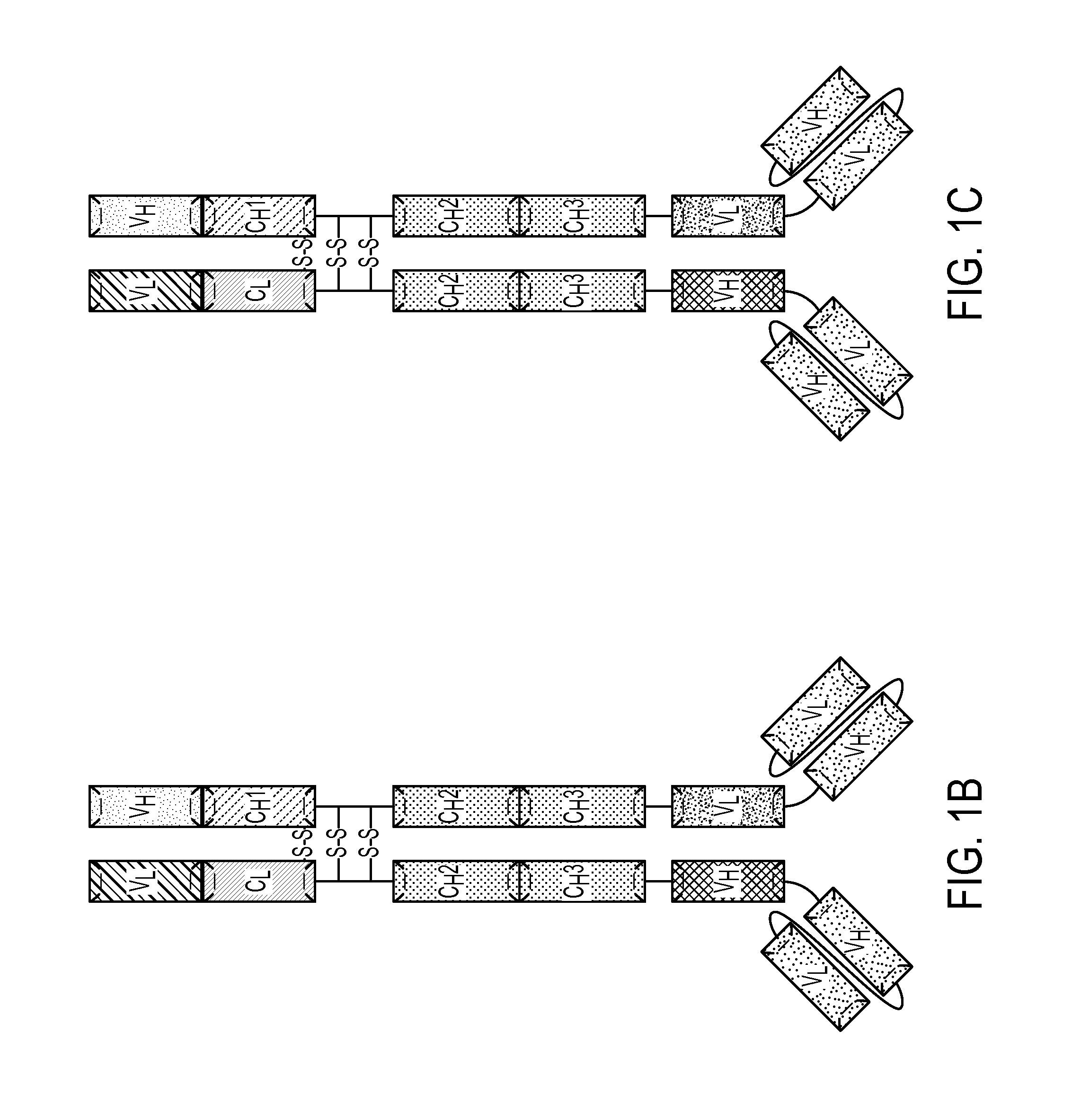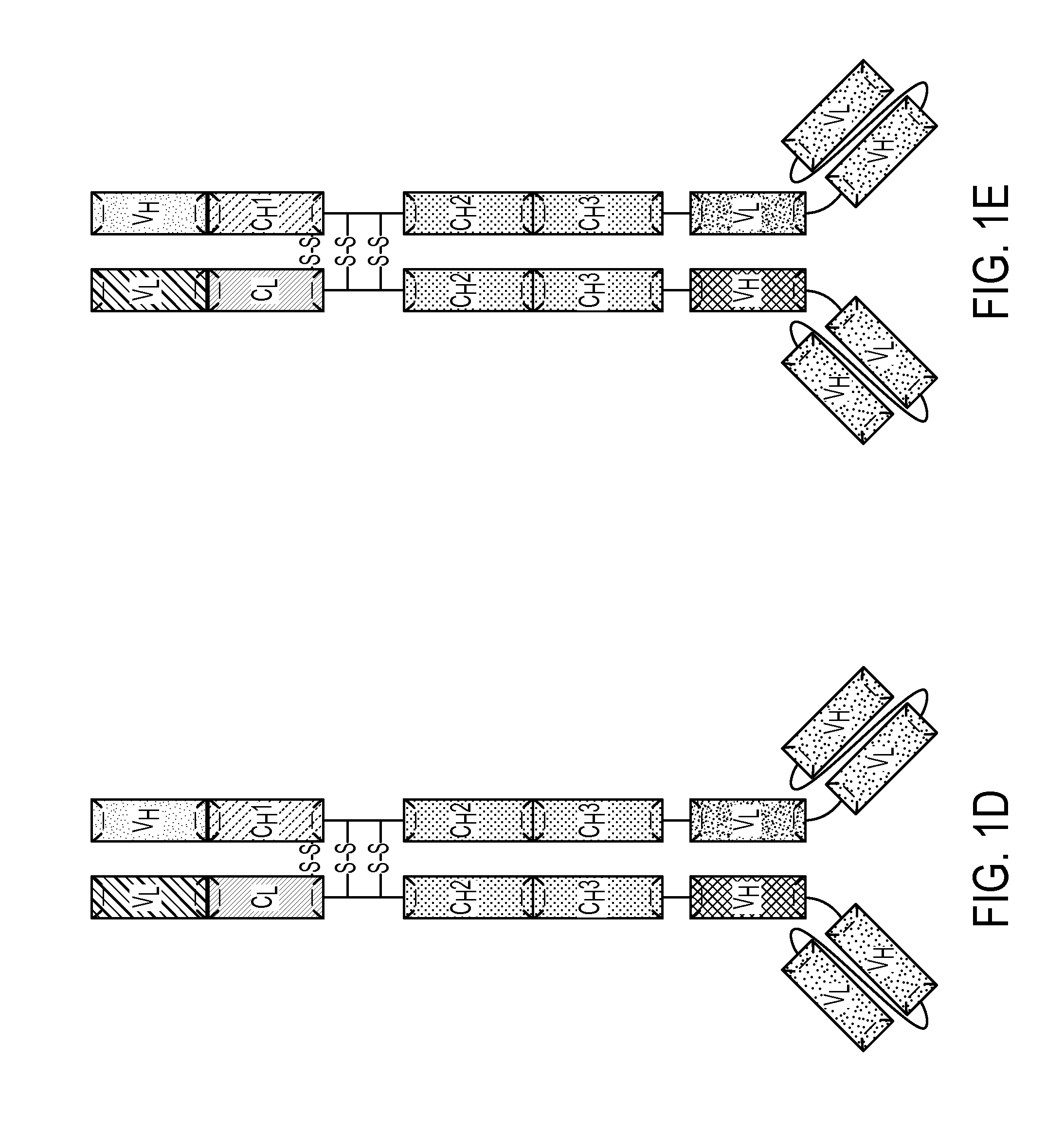Multivalent antibody analogs, and methods of their preparation and use
an antibody analog and multivalent technology, applied in the field of multivalent antibody analogs, can solve the problems of affecting the production and stability of antibody fragments, unable to have the constant region of the antibody with its associated functional properties, and the binding to the new antigen is always bivalen
- Summary
- Abstract
- Description
- Claims
- Application Information
AI Technical Summary
Benefits of technology
Problems solved by technology
Method used
Image
Examples
embodiment 1
[0183]A multivalent antibody analog comprising a first polypeptide and a second polypeptide, wherein:
[0184]a) the first polypeptide comprises a first heavy chain comprising a variable heavy region, a CH2 domain or a variant thereof, and a CH3 domain or a variant thereof; wherein the C-terminus of the CH3 domain or variant thereof is covalently attached to a first variable light domain (VL); and
[0185]b) the second polypeptide comprises a first light chain covalently attached to the N-terminus of an Fc region of a heavy chain, wherein the Fc region comprises a CH2 domain or a variant thereof and a CH3 domain or a variant thereof, and wherein the CH3 domain or variant thereof is covalently attached to a first variable heavy domain (VH);
[0186]wherein said first heavy chain and said first light chain form a first antigen binding site and said first VL and said first VH form a second antigen binding site.
[0187]Embodiment 2. The multivalent antibody analog according to Embodiment 1, wherei...
embodiment 3
[0188]The multivalent antibody analog according to Embodiment 2, wherein the thiol group is provided by a cysteine residue.
embodiment 4
[0189]The multivalent antibody analog according to any one of Embodiments 1 through 3, wherein the first VL is covalently attached to the CH3 domain, or variant thereof, of the first heavy chain via a linker moiety.
PUM
| Property | Measurement | Unit |
|---|---|---|
| Length | aaaaa | aaaaa |
Abstract
Description
Claims
Application Information
 Login to View More
Login to View More - R&D
- Intellectual Property
- Life Sciences
- Materials
- Tech Scout
- Unparalleled Data Quality
- Higher Quality Content
- 60% Fewer Hallucinations
Browse by: Latest US Patents, China's latest patents, Technical Efficacy Thesaurus, Application Domain, Technology Topic, Popular Technical Reports.
© 2025 PatSnap. All rights reserved.Legal|Privacy policy|Modern Slavery Act Transparency Statement|Sitemap|About US| Contact US: help@patsnap.com



